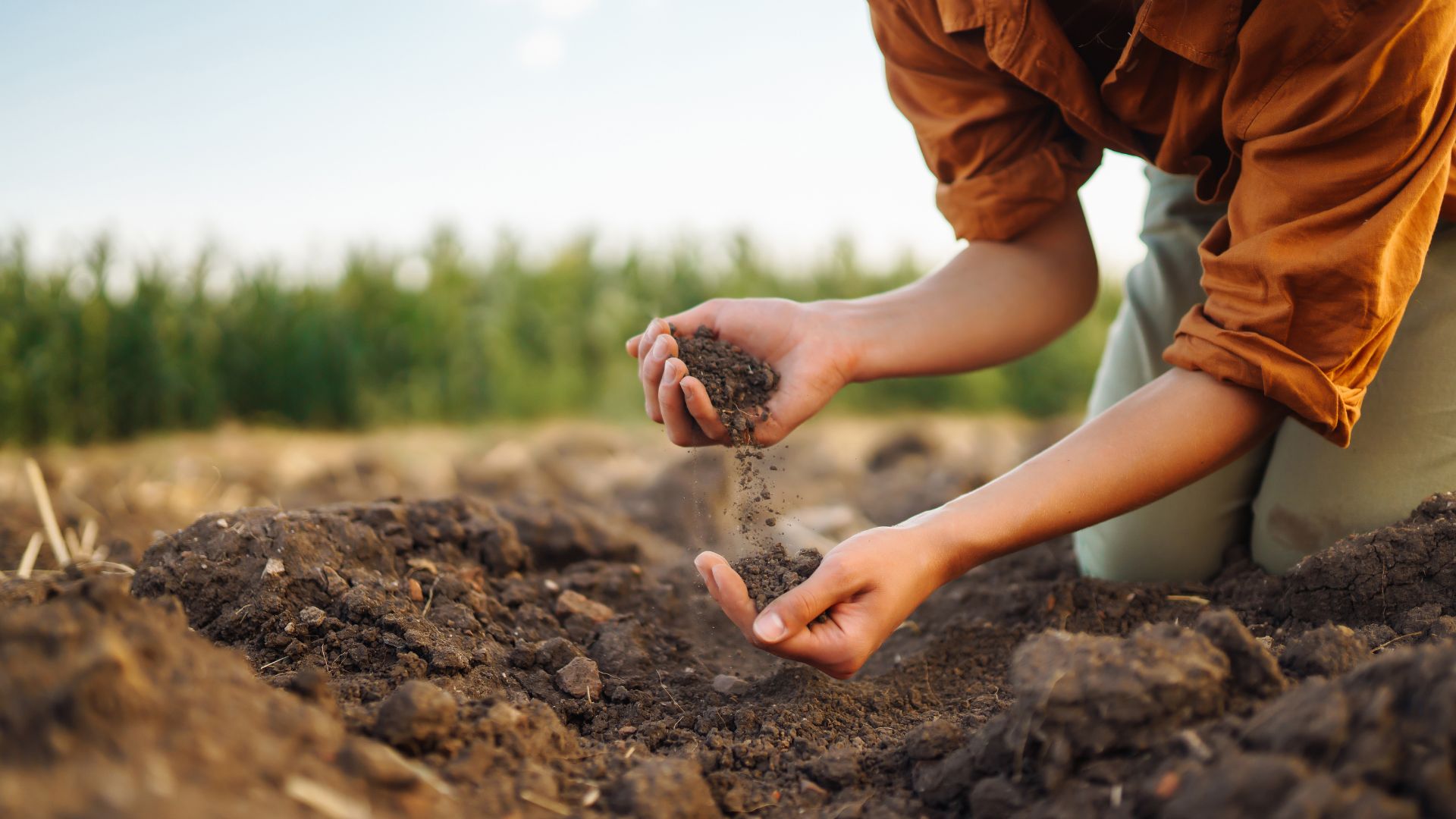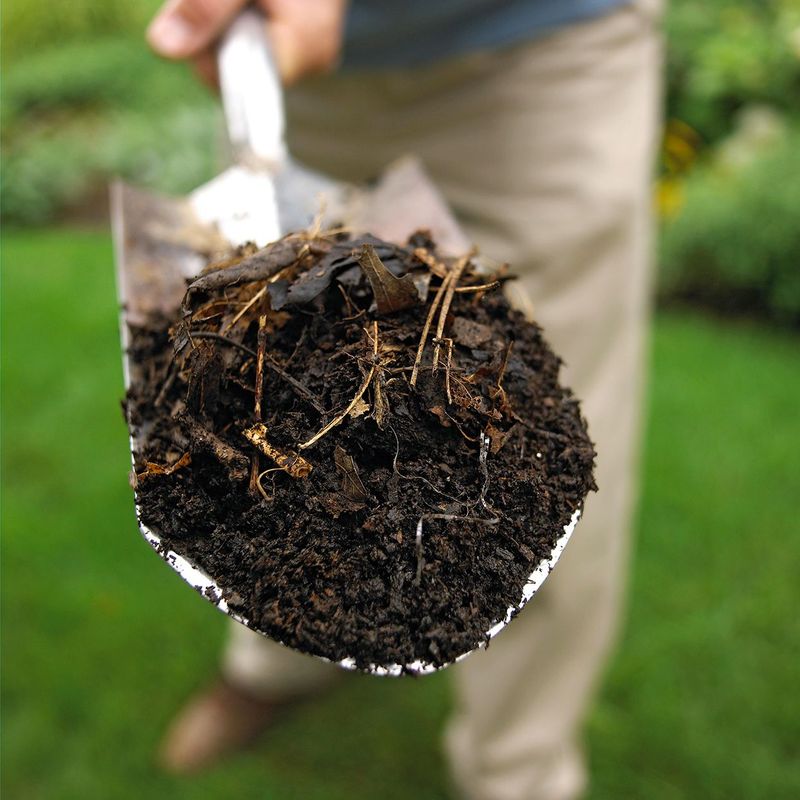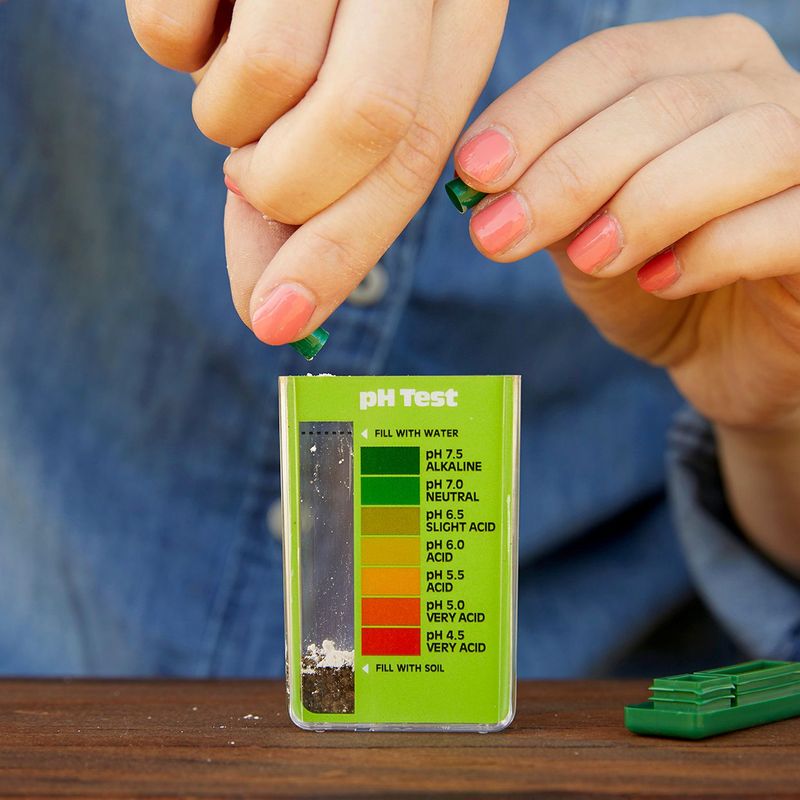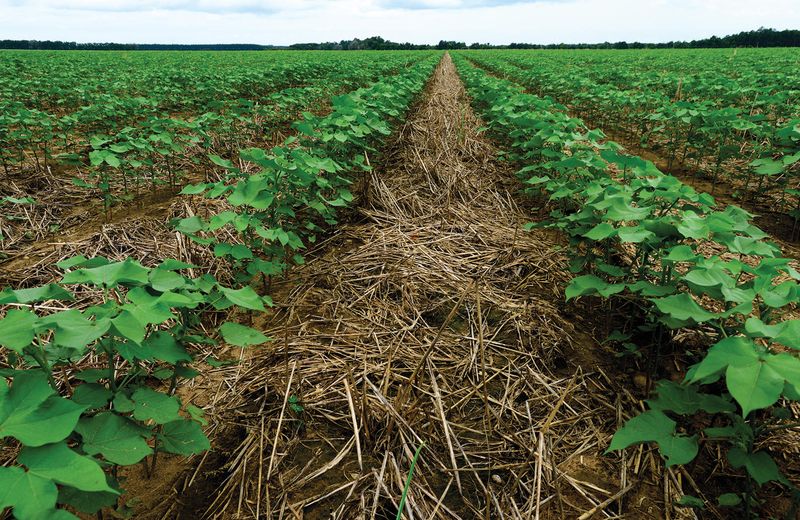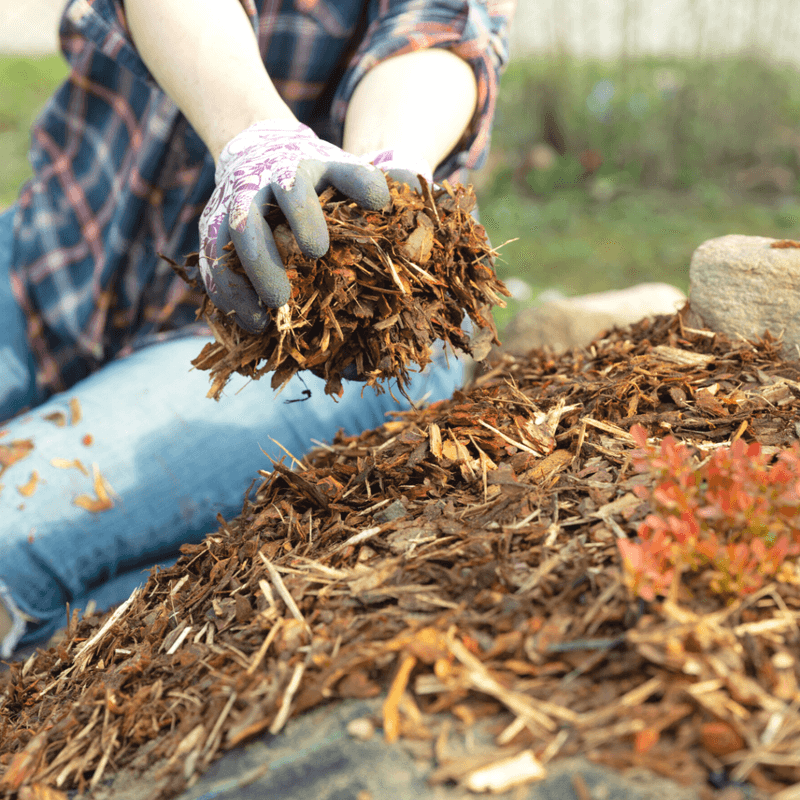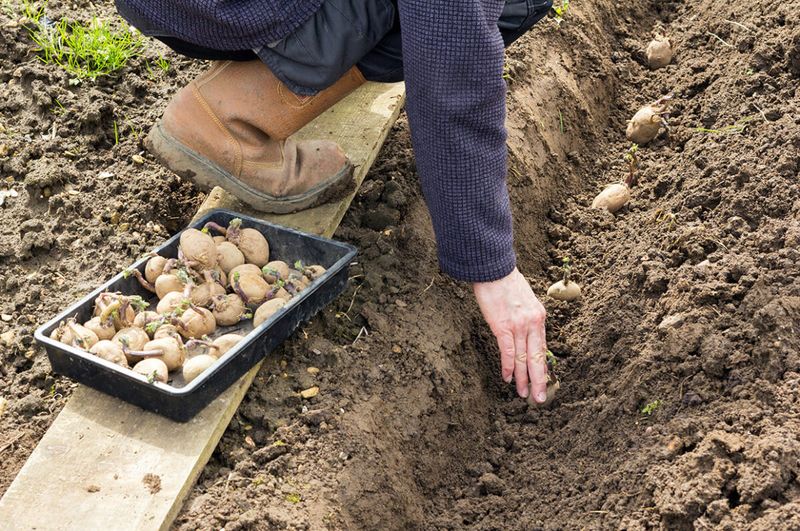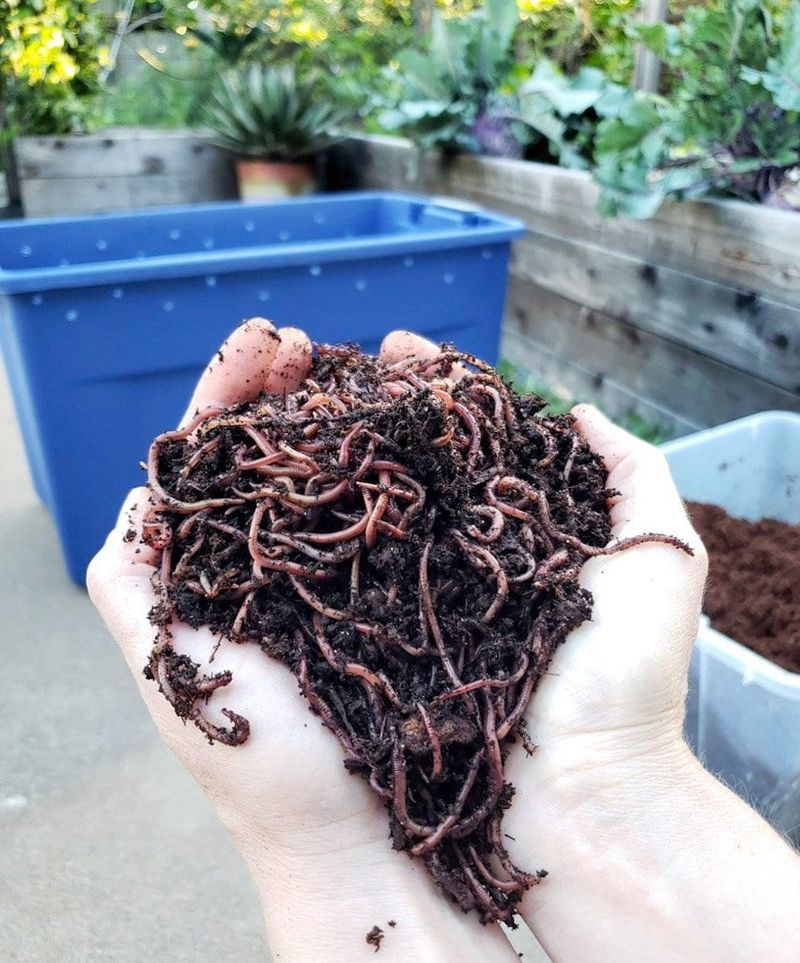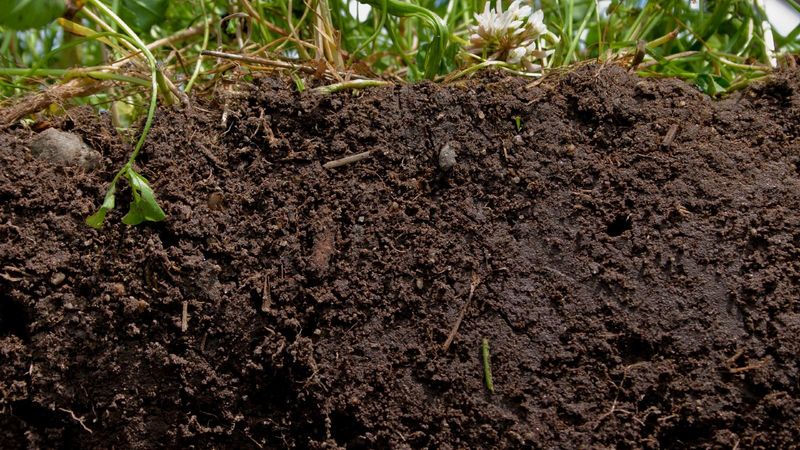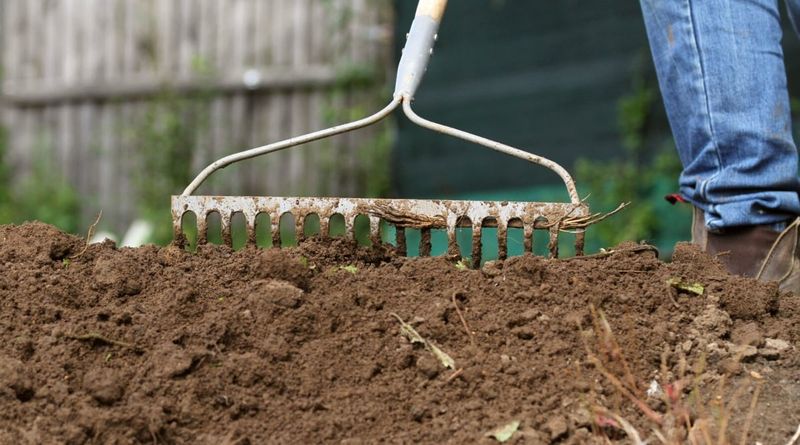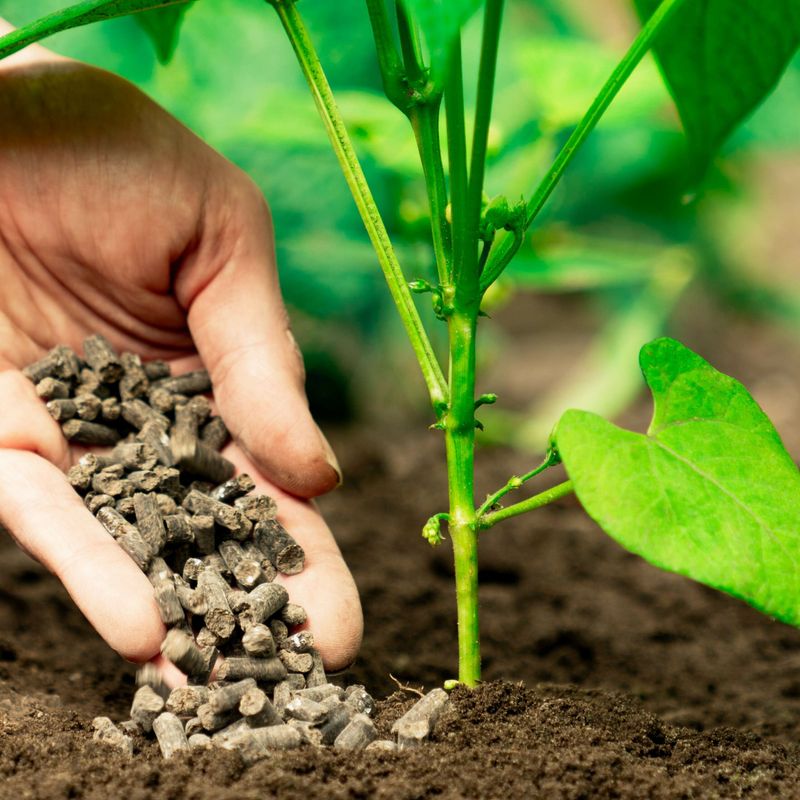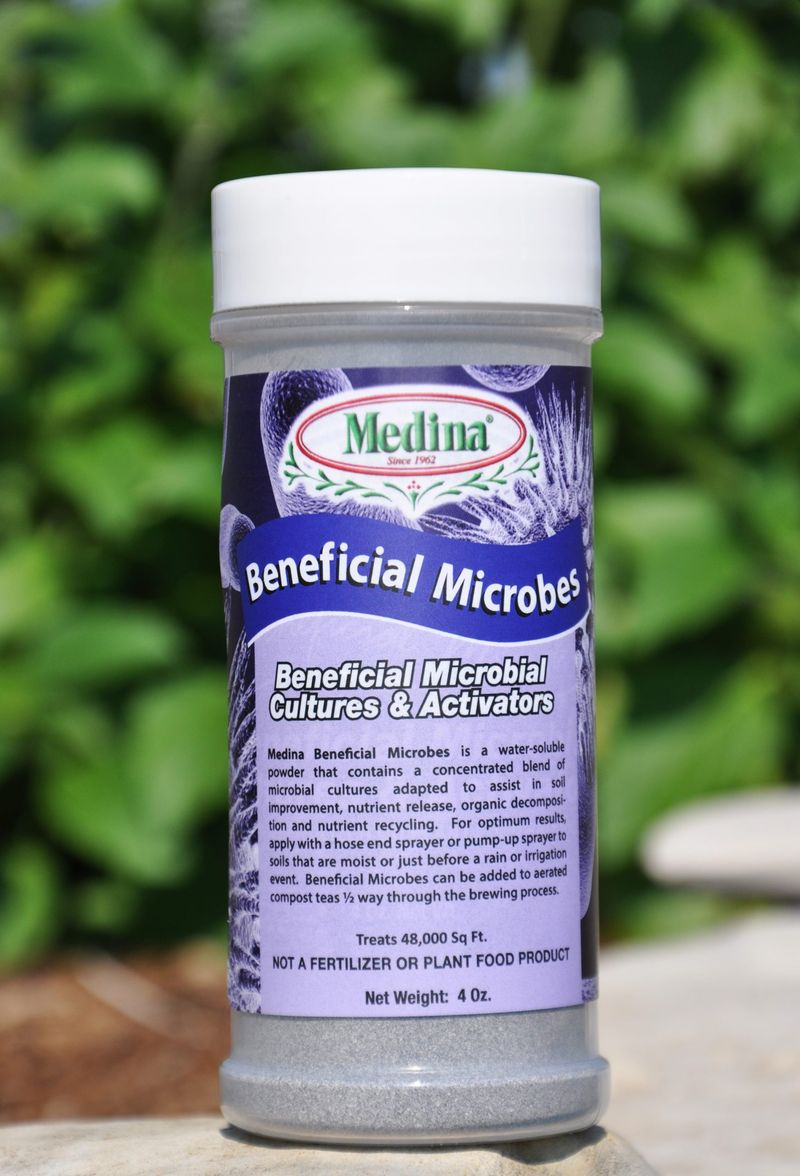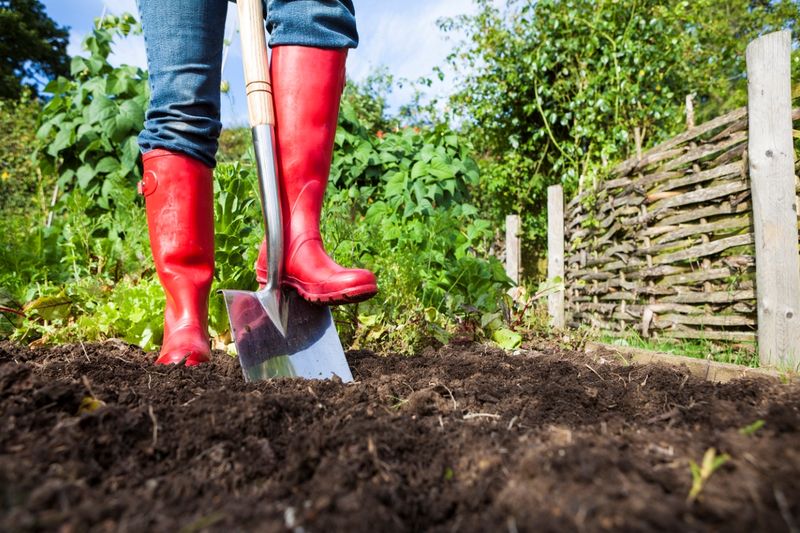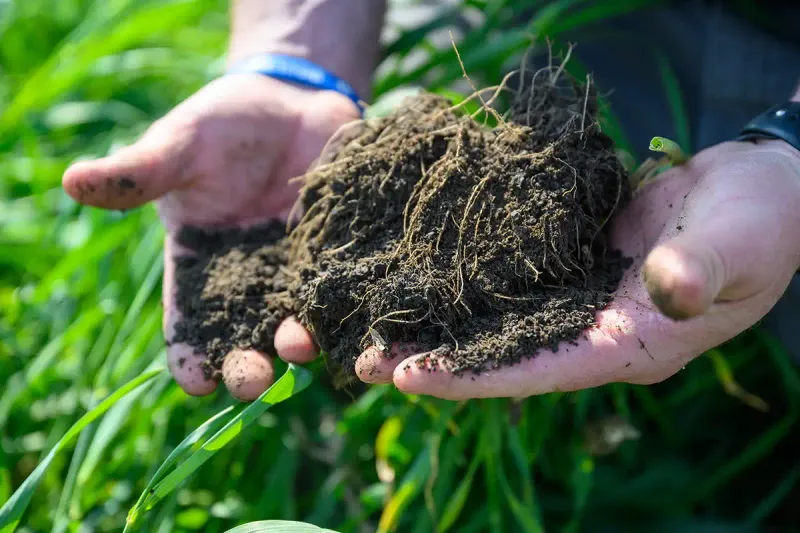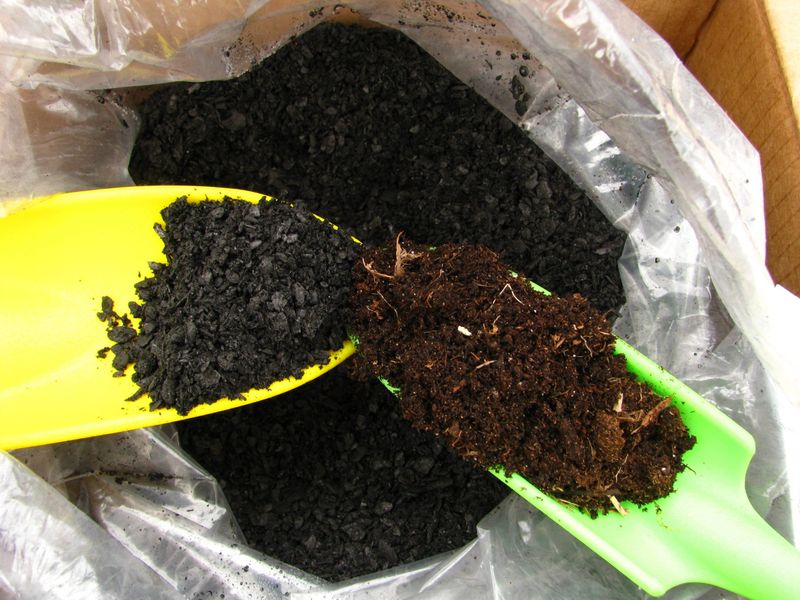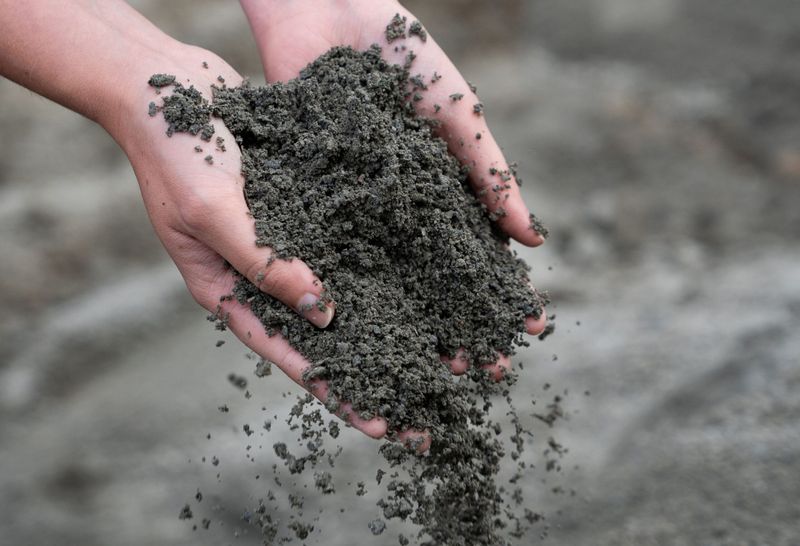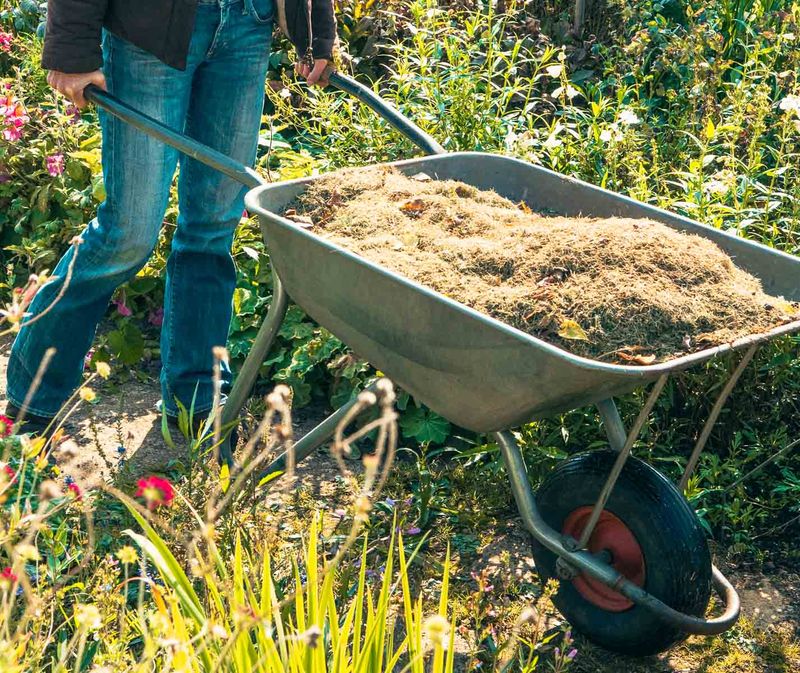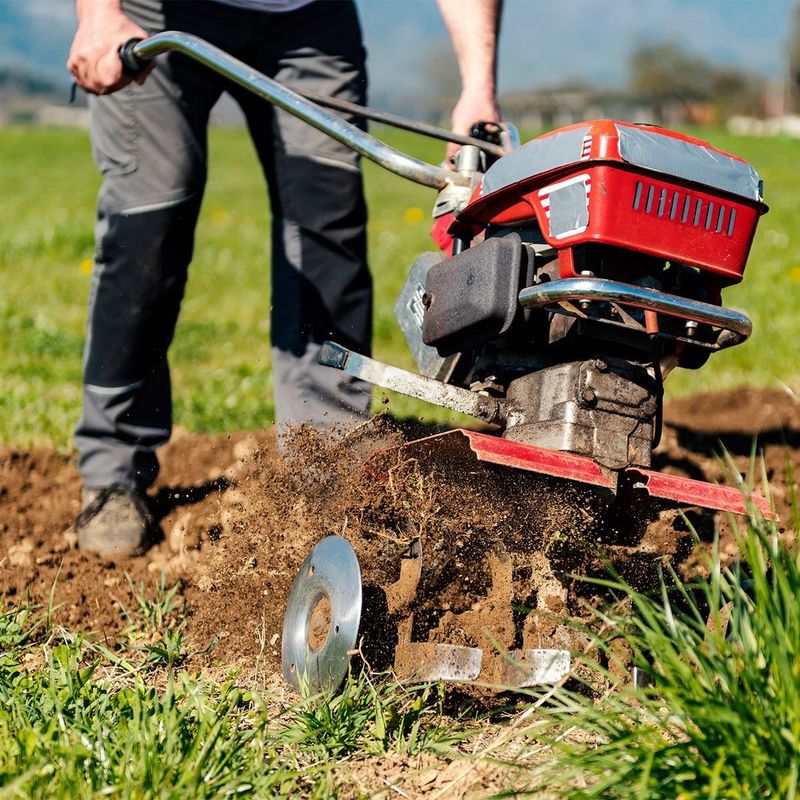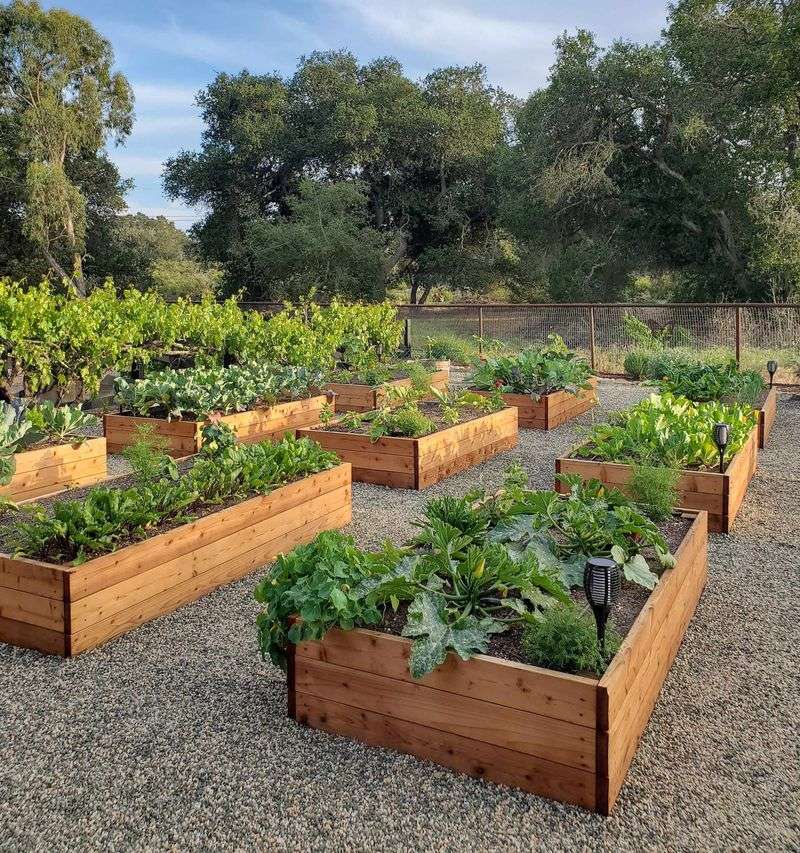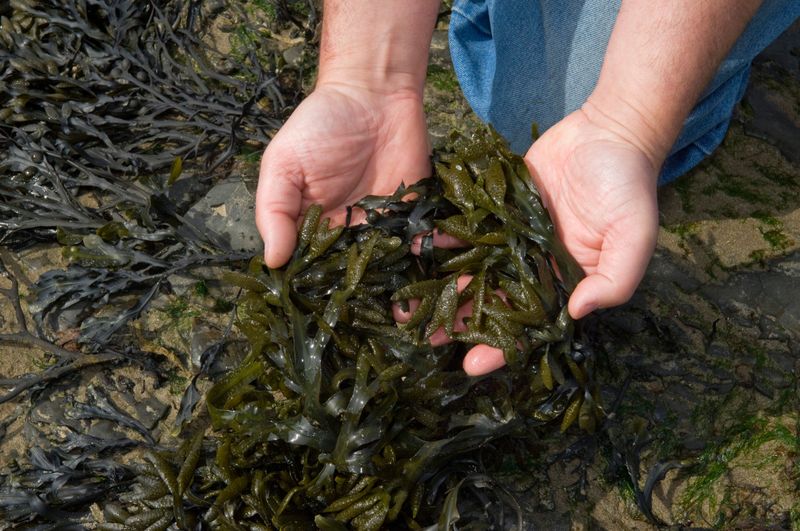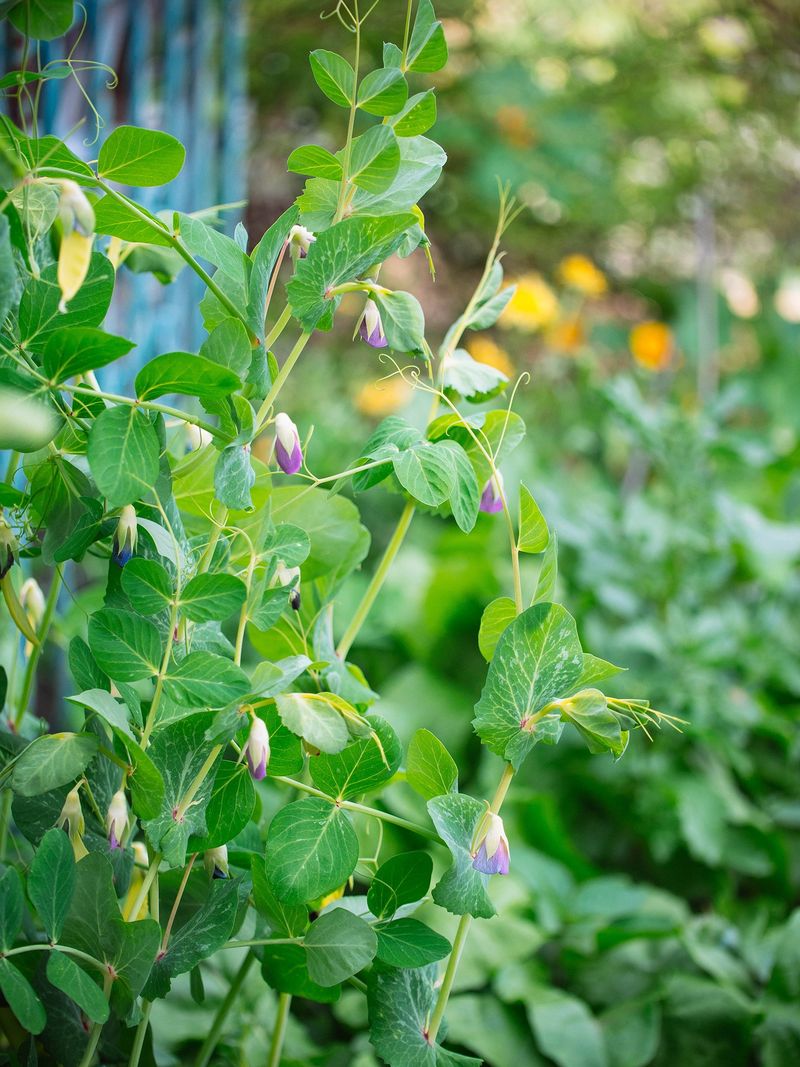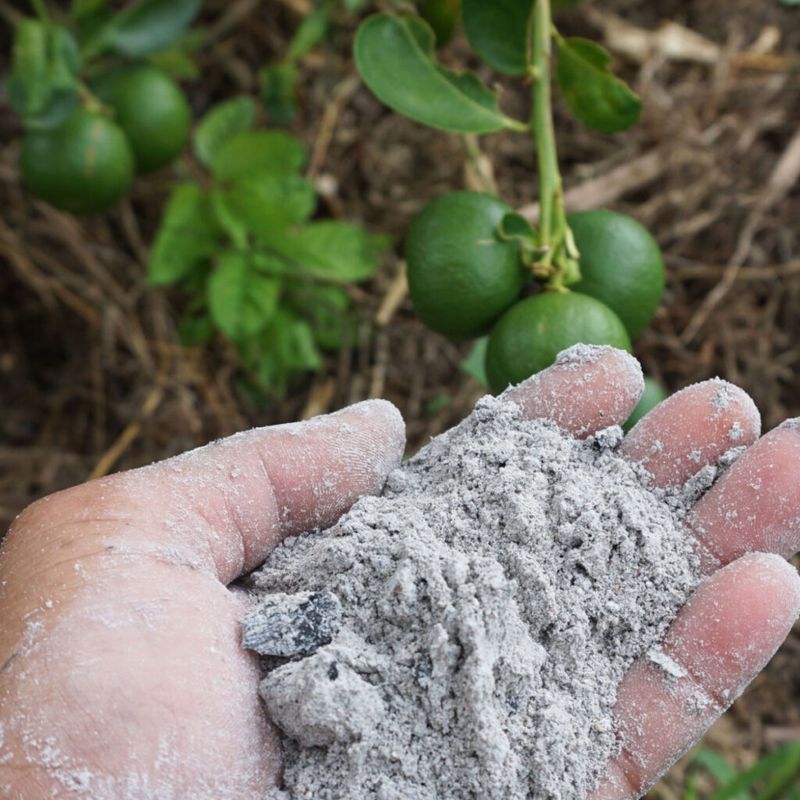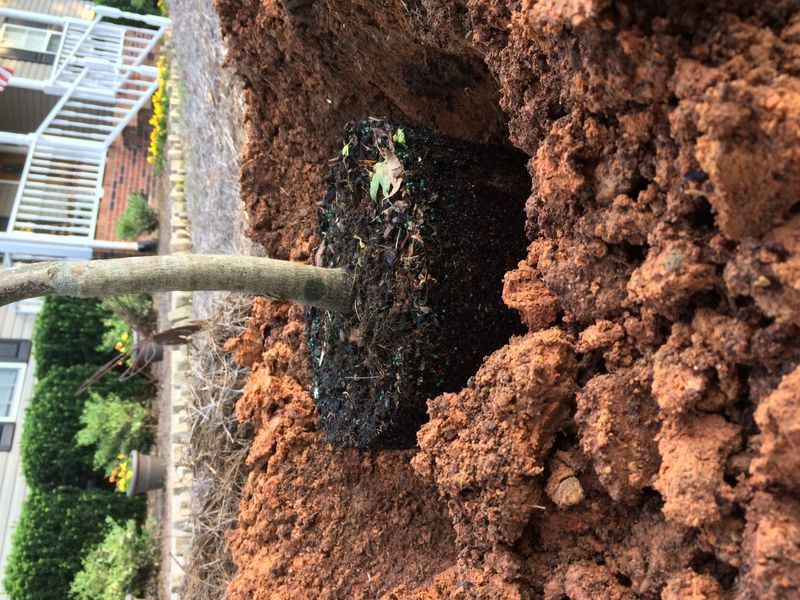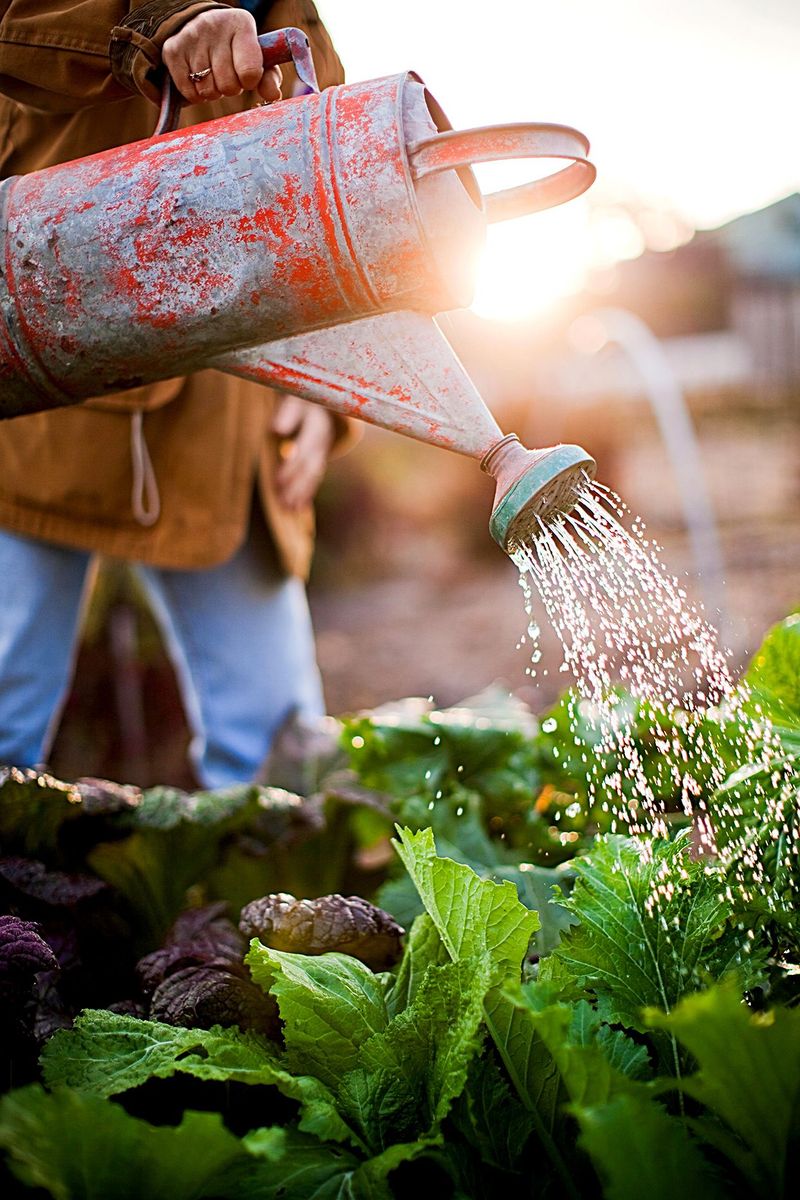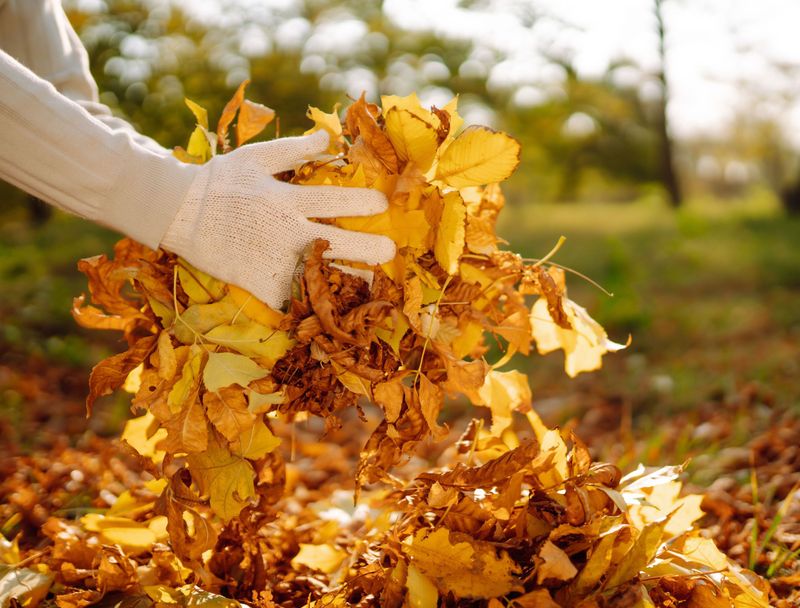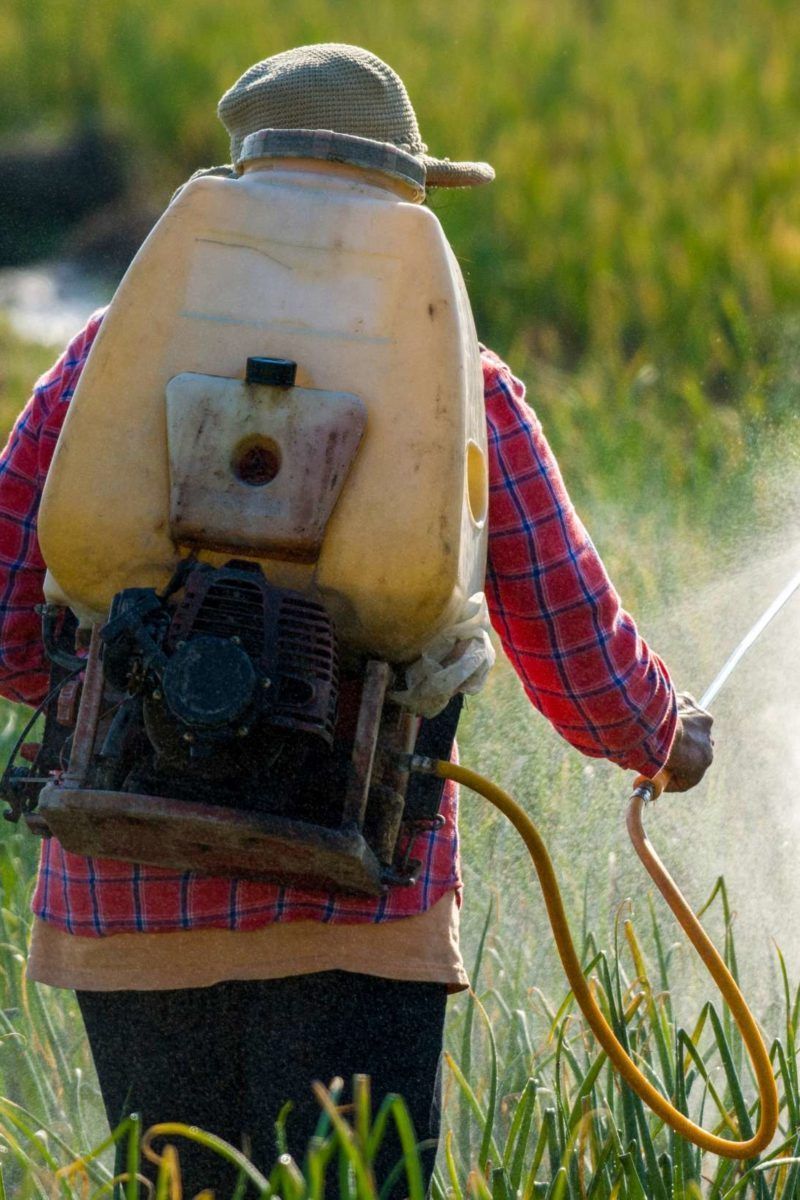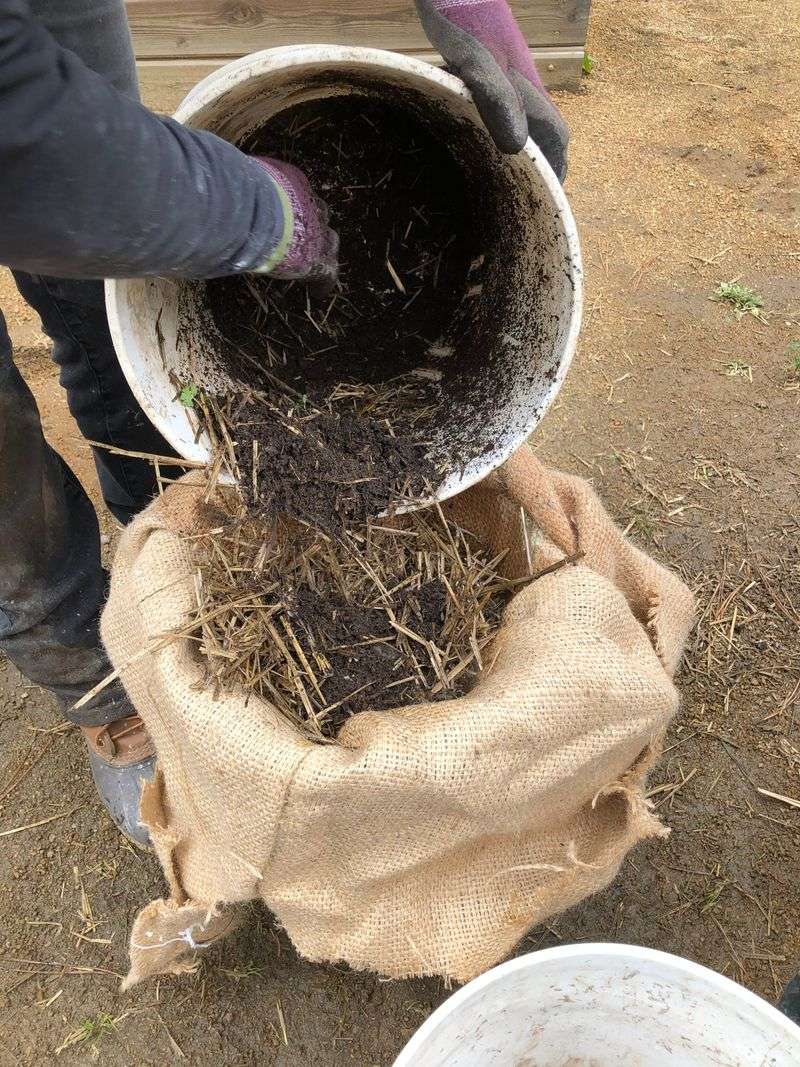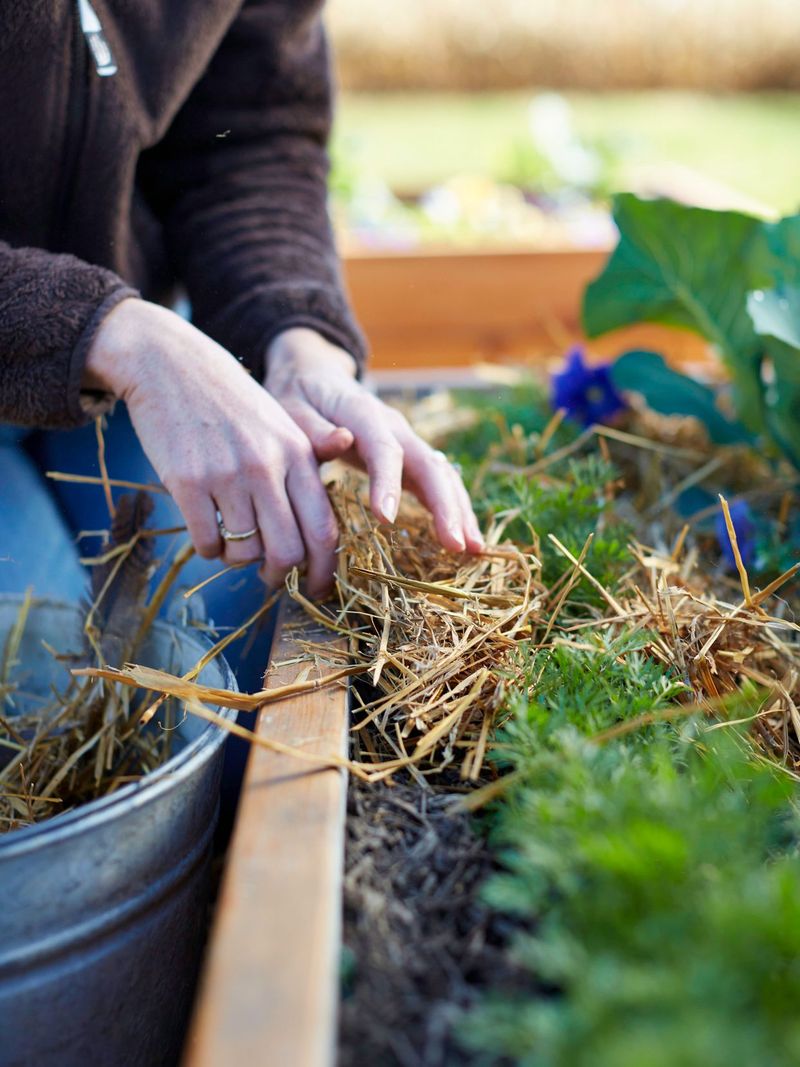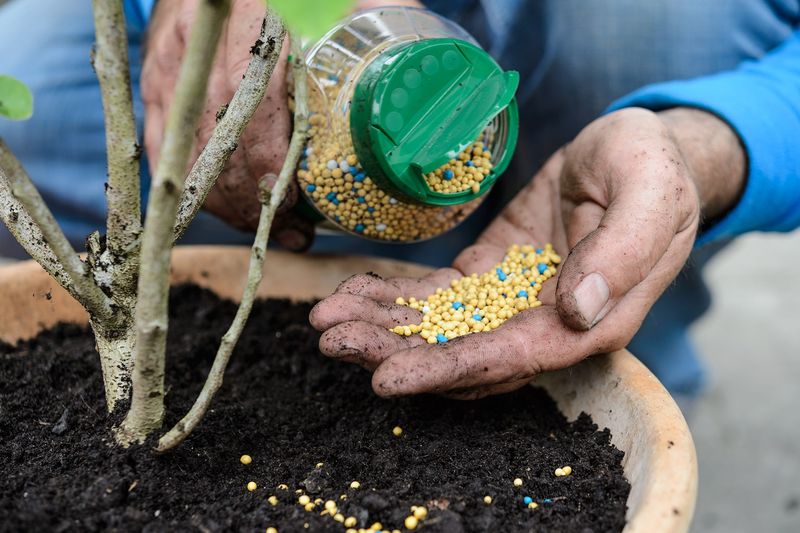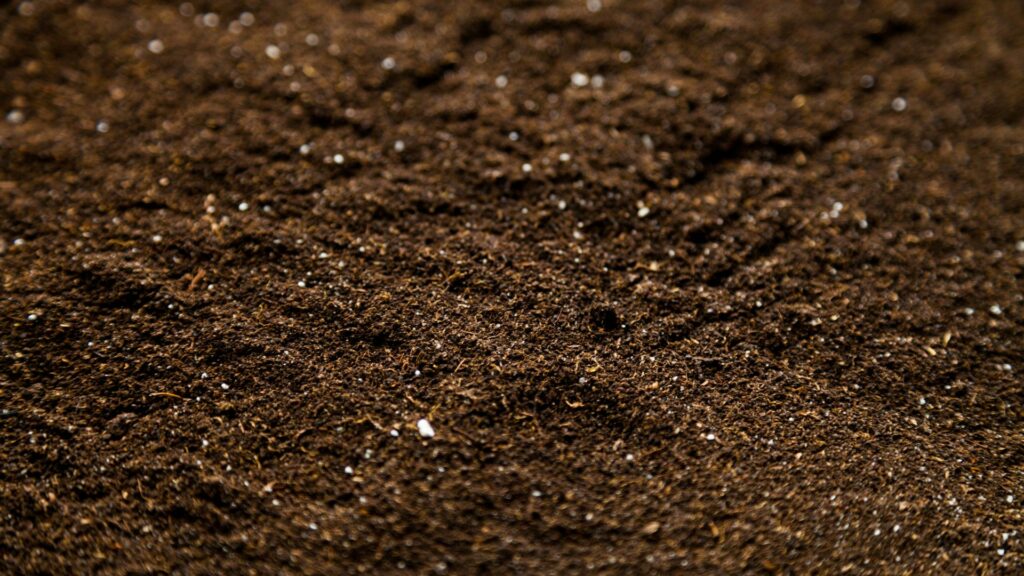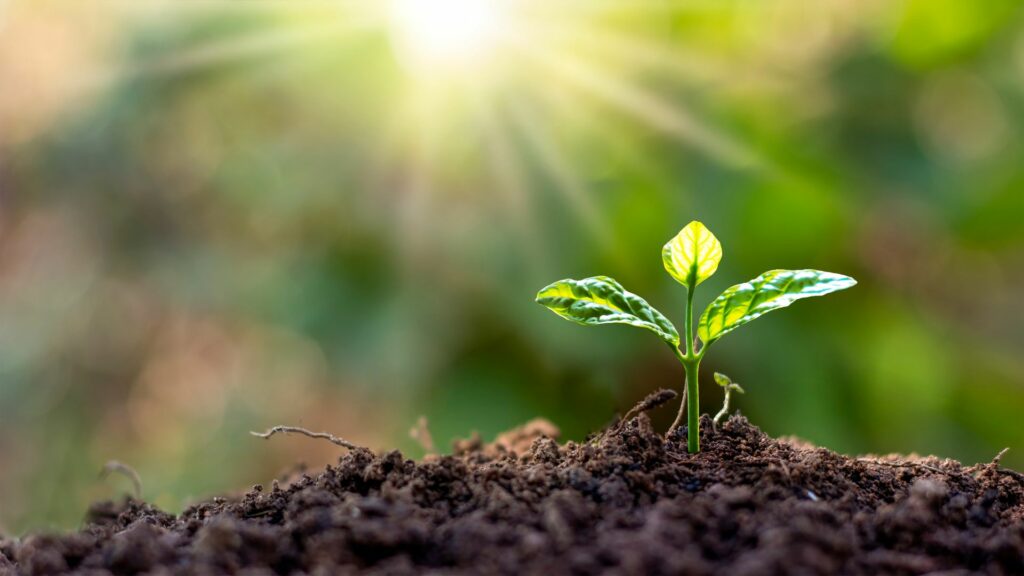As I stand over my garden patch, I can already picture those juicy tomatoes and crisp peppers ready to shine. But before I get ahead of myself, it’s time to show the soil some TLC!
Whether you’re a gardening pro or just dipping your toes in the dirt, boosting your soil’s health is key. From compost to cover crops, there are so many ways to give it the boost it deserves.
So, grab your gloves, roll up your sleeves, and let’s make your soil the best it can be. Your veggies will thank you later!
1. Add Organic Compost
This cool method turns kitchen scraps into gold for your garden. By adding organic compost, the soil benefits from increased nutrients and improved structure.
Composting not only reduces waste but also enhances microbial activity, making your soil a fancy host for plants. As the compost breaks down, it releases nutrients slowly, ensuring steady nourishment for your vegetables.
This method embodies the idea of recycling in the most natural way possible. Plus, who doesn’t love free fertilizer?
2. Test Soil PH
Ever wonder why your plants seem grumpy? Testing soil pH might reveal hidden secrets. If the pH isn’t balanced, plants can struggle to access essential nutrients.
For instance, alkaline soil may lock out iron, leaving your veggies looking pale. A simple pH test kit can guide you to amend with lime or sulfur, ensuring your plants have the nutrients they need.
Understanding pH is like decoding a secret language between soil and plant. It’s interesting how this small test can make a big difference.
3. Incorporate Cover Crops
Cover crops are the unsung heroes of soil health. By planting them, you help reduce erosion and increase organic matter.
These crops, including clover and rye, enrich the soil by fixing nitrogen and improving its structure. When turned into the soil, they decompose, releasing nutrients.
Cover crops offer a fancy twist on traditional farming by keeping your garden green even in the off-season. They act as a natural blanket, protecting and nurturing the soil until it’s time to plant your veggies.
4. Use Organic Mulch
Imagine your garden bed, cozy under a layer of organic mulch. Mulching does wonders, keeping soil moist while suppressing annoying weeds.
Organic mulch, such as straw or wood chips, breaks down slowly, enriching the soil with nutrients. It’s the ultimate soil conditioner, providing a cool way to maintain garden health.
Mulch also moderates soil temperature, a classy feature for sensitive plants. This fancy gardening trick can make your soil a haven for beneficial insects and microorganisms.
5. Rotate Crops
Crop rotation is gardening wisdom that dates back centuries. This practice prevents soil depletion by changing where crops grow each season.
By rotating crops, you break pest cycles and prevent the buildup of soil-borne diseases. It’s a simple yet effective method to maintain soil fertility and health.
Imagine tomatoes one year and beans the next, each benefiting from the other’s nitrogen needs. Crop rotation is like a well-choreographed dance that keeps your garden agile, adaptable, and productive.
6. Add Manure Or Worm Castings
Ah, manure – the gardener’s gold. I remember the first time I spread it, the earthy aroma and rich texture promised a bountiful harvest.
Manure, whether from cows or chickens, adds essential nutrients and organic matter to the soil. Worm castings, those tiny black gold pellets, are another classy option.
Both improve soil structure and fertility, ensuring your plants grow strong and healthy. Remember, a little goes a long way, so don’t overdo it. Your garden will thank you for this nutrient-rich treat.
7. Improve Drainage
Sometimes, soil just needs room to breathe. Improving drainage can be the key to avoiding waterlogged roots. Digging channels or amending the soil with sand or gravel can make a big difference.
Well-drained soil prevents root rot and allows plants to access oxygen more effectively. This technique is a cool way to enhance your garden’s overall health.
Watching water flow effortlessly through your garden is a rewarding sight, knowing you’ve set the stage for a healthy growing season.
8. Aerate The Soil
Loosening soil can breathe life into your garden. Aerating helps oxygen, water, and nutrients penetrate more deeply. This simple act can transform compacted soil into a welcoming home for plant roots.
By aerating, you create pathways for air and moisture, essential for root health. It blows my mind how this straightforward process can change the dynamics of your garden.
Whether using a garden fork or a fancy aerator, your plants will appreciate the effort, rewarding you with vigorous growth.
9. Use Organic Fertilizers
Why settle for synthetic when nature offers so much? Organic fertilizers feed the soil as well as plants, enhancing microbial life.
I wonder why anyone would choose otherwise? These fertilizers, made from natural materials, break down slowly, releasing nutrients over time. This sustained nourishment keeps plants healthy.
It’s a classy choice for gardeners seeking long-term benefits. Organic fertilizers are like a slow-cooked meal for your plants – nutritious, wholesome, and satisfying.
10. Add Beneficial Microbes
Invisible allies in the soil are ready to lend a hand. Beneficial microbes enhance nutrient availability, improve plant resistance, and boost soil health.
Adding them creates a symbiotic relationship between soil and plant. These microbes break down organic matter, releasing nutrients and promoting growth.
It’s like inviting a community of helpers to your garden party. By promoting microbial diversity, you create a resilient and healthy environment.
11. Till Soil Gently
I once believed tilling meant vigorous digging until I learned gentle was the way. Gently tilling the soil preserves its structure and prevents compaction.
Over-tilling can lead to erosion and loss of nutrients. By disturbing only the top layer, you protect beneficial organisms.
My first gentle tilling opened my eyes to a healthier garden, with plants seeming happier and more robust. This method is a simple way to maintain soil integrity.
12. Increase Soil Organic Matter
Building organic matter in soil is like adding nutrients to your diet. Organic matter improves soil structure, moisture retention, and nutrient availability.
Adding compost, aged manure, or plant residues can enhance your soil’s organic content. This rich addition creates a thriving environment for beneficial organisms. It’s a fancy way to boost soil fertility naturally. Over time, increasing organic matter transforms your garden into a productive and sustainable haven, ready to support any vegetable you wish to grow.
13. Use Biochar
Biochar offers a sustainable twist to gardening. This charcoal-like substance enhances soil fertility and water retention.
By adding biochar, you give your soil the ability to hold nutrients and support beneficial microbes. It’s an ancient technique with modern applications, making it a cool choice for today’s gardeners.
Biochar’s porous nature helps lock in nutrients, reducing the need for constant fertilization. This method springs from ecological wisdom, offering a sustainable boost to soil health.
14. Apply Rock Minerals
Have you ever considered rocks in your garden? Applying rock minerals can remineralize soil, providing essential elements like calcium and magnesium.
These minerals enhance nutrient uptake and improve soil structure. The question is, why wouldn’t you want to give it a try?
This method can surprise you with its effectiveness, promoting healthy plant growth and increased yields. Rock minerals are a natural way to enrich your garden.
15. Mulch With Grass Clippings
Grass clippings are more than just lawn waste; they’re a treasure for your garden. Using them as mulch offers a cool recycling method, adding nutrients and retaining soil moisture.
As they break down, grass clippings enhance soil structure and fertility. Mulching this way is a sustainable way to keep your garden healthy.
It’s fascinating how something so simple can have such a significant impact. Your garden will enjoy the benefits of this natural boost, fostering a classy growth environment.
16. Avoid Over-Tilling
Sometimes, less is more. Over-tilling can wreak havoc on soil structure and lead to erosion. By avoiding excessive tilling, you protect beneficial organisms and preserve nutrient-rich layers.
This practice reduces compaction and improves water retention. Your soil will thank you for the rest, maintaining its natural balance.
Gardening doesn’t always mean more work; sometimes, it’s about letting nature do its thing. This method is a sustainable choice for those looking to improve soil health without unnecessary disruption.
17. Implement Raised Beds
Raised beds offer a cool way to garden on your terms. I recall building my first with a sense of accomplishment.
These structures improve soil drainage and make gardening more accessible. By controlling soil quality, you can create the perfect environment for your plants.
Raised beds also warm up faster in spring, extending the growing season. This gardening method is a practical choice, allowing you to tailor your garden to specific needs.
18. Add Seaweed Or Kelp
Seaweed isn’t just a beach nuisance, but a garden gold. Packed with nutrients and trace elements, seaweed or kelp can improve soil health and plant growth.
This oceanic treasure enhances soil structure and increases microbial activity. Using seaweed as a fertilizer is a sustainable choice, recycling natural resources for your garden’s benefit.
It’s funny how something from the sea can transform your land garden. Rich in natural growth hormones, seaweed offers a unique and classy way to boost soil health.
19. Plant Legumes To Fix Nitrogen
Legumes have the nifty ability to fix nitrogen, an essential nutrient for plants. By planting legumes, you enrich the soil naturally, reducing the need for synthetic fertilizers.
These plants partner with bacteria to convert atmospheric nitrogen into a form plants can use. It’s a cool symbiotic relationship that benefits your entire garden.
Legumes improve soil texture and fertility, offering a sustainable solution to nutrient management. They’re like the clever friend who always knows how to make things better.
20. Use Green Manure
Have you ever thought about growing plants just to plow them back into the soil? That’s green manure for you. This method enriches soil fertility by adding organic matter and nutrients.
Green manure crops, like clover, improve soil structure and suppress weeds. By turning them under, you create a nutrient-rich environment for future plants.
It’s astonishing how this simple technique can alter a garden’s potential. Green manure is a classy way to prepare your soil for a productive growing season.
21. Add Wood Ash In Moderation
Wood ash might seem like just leftovers, but it can be a garden’s friend in moderation. Rich in potassium and calcium, it helps balance soil pH and adds essential nutrients.
The trick is to use it sparingly, as too much can raise pH levels excessively. Wood ash is a cool, sustainable way to recycle fireplace waste, giving back to your garden.
It’s astonishing how this simple amendment can enhance soil fertility, making it a valuable tool for the resourceful gardener.
22. Improve Soil Structure With Sand Or Clay
Have you noticed your soil seems a bit stubborn? Adding sand or clay can change that. By mixing these materials, you can alter soil texture, improving drainage and aeration.
Why struggle with soil that doesn’t suit your plants? This method gives you control over your garden’s foundation.
It’s a classy way to customize your soil, making it more accommodating to plant needs. This practical approach fosters a healthier growing environment, ensuring your vegetables have a perfect home.
23. Water Soil Properly
Watering might seem basic, but doing it right can work wonders. Proper watering ensures plants receive the moisture they need without drowning them.
By watering in the morning, you reduce evaporation and give plants time to absorb moisture. It’s fascinating how a simple change in routine can boost plant health.
This method conserves water and prevents common issues like root rot. Being mindful of watering is a cool way to nurture your garden, ensuring it grows healthy and strong.
24. Incorporate Plant-Based Mulch
I remember the satisfaction of tucking my plants in with a cozy layer of plant-based mulch. This mulch provides a classy way to retain soil moisture and suppress weeds.
As it breaks down, it enriches the soil with nutrients. Using leaves or straw, you create a sustainable cycle, where garden waste becomes a resource.
It’s a cool, natural method to enhance soil health, fostering a thriving environment for your plants. Your garden will thank you for this gentle touch, growing more robust with each season.
25. Avoid Chemical Pesticides
Chemical pesticides might promise quick fixes, but they often harm beneficial organisms. By avoiding these chemicals, you protect soil health and foster a balanced ecosystem.
Natural alternatives or integrated pest management techniques can control pests without damaging the environment.
This method preserves biodiversity, ensuring your garden remains a thriving habitat. This thoughtful approach promotes long-term sustainability and productivity.
26. Use Compost Teas
Have you ever thought of making tea for your plants? Compost tea is a nutrient-rich brew that boosts soil health. By steeping compost in water, you create a liquid fertilizer teeming with beneficial microbes.
This method enhances nutrient availability and improves plant growth. Compost teas offer a sustainable way to nurture plants, providing a natural alternative to chemical fertilizers.
Your garden will thrive with this organic elixir, making it a fancy addition to your gardening routine.
27. Incorporate Straw
Who knew straw could be so versatile? Incorporating straw into your garden helps retain moisture and suppress weeds.
Have you wondered how something so simple can be so effective? As it breaks down, straw adds organic matter, improving soil structure and fertility.
This method offers a sustainable way to recycle and enhance garden health. It’s a cool way to support plant growth, creating a cozy environment for your veggies.
28. Add Bone Or Blood Meal
Bone and blood meal might sound like a horror movie, but they’re plant favorites. Rich in phosphorus and nitrogen, these meals provide essential nutrients for root and shoot growth.
Adding them to your garden enhances soil fertility and promotes vigorous plant development.
This method is a sustainable way to recycle byproducts from the meat industry, offering a fancy nutritional boost to your garden.
29. Introduce Mycorrhizal Fungi
There’s a whole underground network just waiting to help your plants thrive. Mycorrhizal fungi form symbiotic relationships with plant roots, extending their reach for water and nutrients.
By adding mycorrhizal inoculants to your soil or planting with fungi-friendly companions, you boost nutrient uptake and resilience. It’s a classy collaboration that enhances root systems and fosters long-term soil health.
Think of these fungi as your garden’s Wi-Fi — quietly connecting everything below the surface for better growth up top.
30. Solarize Your Soil
Sunbathing your soil? Yes, please — solarization uses the sun’s heat to kill off pathogens, weeds, and harmful pests in your garden bed.
To do it, cover moist soil with clear plastic for 4–6 weeks during peak sun. This natural method improves soil health by giving it a clean slate, all without chemicals.
It’s a surprisingly powerful way to prep soil, especially if your past seasons have had disease issues. Consider it a warm reset button for your garden’s foundation.

